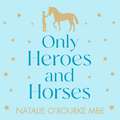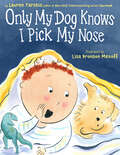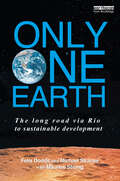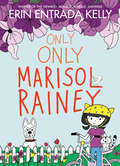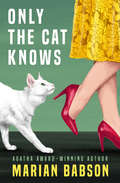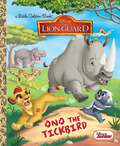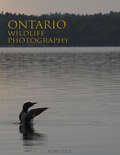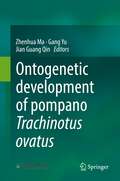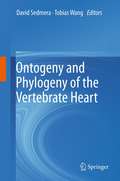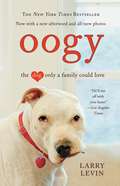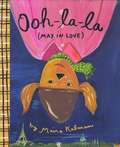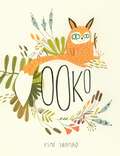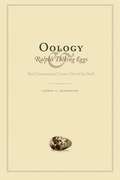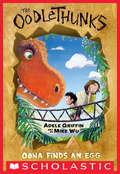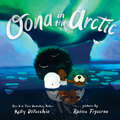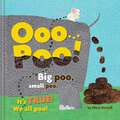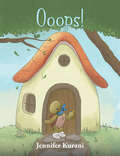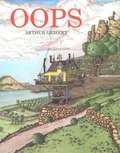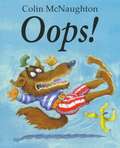- Table View
- List View
Only Heroes and Horses
by Natalie O’Rourke'[Park Lane Stables] is such a force for good' - Rob Brydon'[An] uplifting story' - Horse and Rider This is the story of Park Lane Stables. It is about hope, about horses and about lots and lots of heroes. Natalie O'Rourke was an ordinary little girl from Birmingham in all respects save one: she was lonely. When she discovered how much she loved horses, she decided she wanted to grow up and run a riding stables. She wanted her stables to cater for children and adults with disabilities, additional needs and anyone who needed a friend - people who you might not expect to find riding, but who she knew could find happiness through horses, because she had. Full of guts and optimism, Natalie fought tooth and nail to achieve that dream in the face of some hefty tragedy, heartbreak and hardship. Even the Covid-19 crisis couldn't slow her or her league of fearless Park Lane colleagues down - despite barely surviving financially in lockdown, the stables' 'Pavement Ponies' paid visits to the community on a mission to cheer their neighbours up, and tirelessly supported the NHS. But when the news came that the landlord was selling the stables, and that the Park Lane horses and their humans would be evicted unless they found a whopping £1,000,000 to buy the plot, it seemed a mountain too high even for this plucky team to climb. Could they win the support of the nation and with it their fight to save the stables?
Only Murders in the Abbey: An absolutely gripping and witty Golden Age cozy murder mystery (A Loch Down Abbey Mystery)
by Beth Cowan-Erskine'Wonderful read and a great whodunnit with all the intriguing clues and red herrings... I highly recommend this as a great read if you're looking for a murder mystery, a bit of humour and an escape' Reader review ⭐⭐⭐⭐⭐'Mrs MacBain, thank god it's you.' Without another word, he grabbed her arm and pulled her into the room, locking the door behind them. Mrs MacBain turned around, clearly offended at being manhandled, but then gasped, 'Is that blood?'Loch Down Abbey is full of guests for a Highland Ball. Including several uninvited members of the Inverkillen clan, the Abbey's former residents. Housekeeper Mrs MacBain thinks her biggest challenge will be finding suitable rooms for everyone and keeping the peace at cocktail hour.Until the morning after the ball, when one of the guests is discovered inside the Abbey's library - as dead as a doornail.Who would have had motive to want them dead? And how did they manage to commit their crime and escape while keeping the door locked from the inside? With an Abbey full of suspects and secrets, it is down to Mrs MacBain to catch the killer before they strike again... A brilliantly twisty and deliciously witty Golden Age murder mystery to transport you to 1930s Scotland. Perfect for fans of Agatha Christie, Janice Hallett and Richard Osman. Readers love Only Murders in the Abbey:'This cosy crime novel will keep readers on their toes... It's both a lot of fun to read and to try and work out the culprit' Reader review ⭐⭐⭐⭐⭐'Fun cosy murder story. Lots of colourful characters... Such a good mystery with a few twists and turns. A most enjoyable book' Reader review ⭐⭐⭐⭐⭐'Just brilliant' Reader review ⭐⭐⭐⭐⭐'A fabulously written gripping story that was a pleasure to read. I would absolutely recommend this book, it was brilliant' Reader review ⭐⭐⭐⭐⭐
Only Murders in the Abbey: An absolutely gripping and witty Golden Age cozy murder mystery (A Loch Down Abbey Mystery)
by Beth Cowan-Erskine'Mrs MacBain, thank god it's you.' Without another word, he grabbed her arm and pulled her into the room, locking the door behind them. Mrs MacBain turned around, clearly offended at being manhandled, but then gasped, 'Is that blood?' Loch Down Abbey is full of guests for a Highland Ball. Including several uninvited members of the Inverkillen clan, the Abbey's former residents. Housekeeper Mrs MacBain thinks her biggest challenge will be finding suitable rooms for everyone and keeping the peace at cocktail hour. Until the morning after the ball, when one of the guests is discovered inside the Abbey's library - as dead as a doornail. Who would have had motive to want them dead? And how did they manage to commit their crime and escape while keeping the door locked from the inside? With an Abbey full of suspects and secrets, it is down to Mrs MacBain to catch the killer before they strike again...
Only Murders in the Abbey: An absolutely gripping and witty Golden Age cozy murder mystery (A Loch Down Abbey Mystery)
by Beth Cowan-Erskine'Wonderful read and a great whodunnit with all the intriguing clues and red herrings... I highly recommend this as a great read if you're looking for a murder mystery, a bit of humour and an escape' Reader review ⭐⭐⭐⭐⭐'Mrs MacBain, thank god it's you.' Without another word, he grabbed her arm and pulled her into the room, locking the door behind them. Mrs MacBain turned around, clearly offended at being manhandled, but then gasped, 'Is that blood?'Loch Down Abbey is full of guests for a Highland Ball. Including several uninvited members of the Inverkillen clan, the Abbey's former residents. Housekeeper Mrs MacBain thinks her biggest challenge will be finding suitable rooms for everyone and keeping the peace at cocktail hour.Until the morning after the ball, when one of the guests is discovered inside the Abbey's library - as dead as a doornail.Who would have had motive to want them dead? And how did they manage to commit their crime and escape while keeping the door locked from the inside? With an Abbey full of suspects and secrets, it is down to Mrs MacBain to catch the killer before they strike again... A brilliantly twisty and deliciously witty Golden Age murder mystery to transport you to 1930s Scotland. Perfect for fans of Agatha Christie, Janice Hallett and Richard Osman. Readers love Only Murders in the Abbey:'This cosy crime novel will keep readers on their toes... It's both a lot of fun to read and to try and work out the culprit' Reader review ⭐⭐⭐⭐⭐'Fun cosy murder story. Lots of colourful characters... Such a good mystery with a few twists and turns. A most enjoyable book' Reader review ⭐⭐⭐⭐⭐'Just brilliant' Reader review ⭐⭐⭐⭐⭐'A fabulously written gripping story that was a pleasure to read. I would absolutely recommend this book, it was brilliant' Reader review ⭐⭐⭐⭐⭐
Only My Dog Knows I Pick My Nose
by Lauren TarshisA hilarious and tender picture book perfect for fans of No, David that insightfully explores the inner world of a child. The picture book debut from the New York Times bestselling author of I Survived, Lauren Tarshis!To the outside world, it might look like you do everything right: eat your broccoli, share your toys, and behave in the bath. But what about the moments when no one is looking, and your messier, mushier, scared-ier self is revealed? The only one who knows is... the loyal dog friend who sees it all and still loves you just the way you are.This celebration of friendship, loyalty, and unconditional love with man's -- and child's -- best friend is sure to delight and entertain readers of all ages. Laugh along with recognition and delight in this ode to being true to yourself. With tender, humorous text from New York Times bestselling author Lauren Tarshis, and joyful, expressive watercolors from artist Lisa Mezoff, this sweet book presents a validating message of confidence, empowerment, and unconditional love.
Only One Earth: The Long Road via Rio to Sustainable Development
by Michael Strauss Felix Dodds with Maurice StrongForty years after the United Nations Conference on the Human Environment in Stockholm, the goal of sustainable development continues via the Rio+20 conference in 2012. This book will enable a broad readership to understand what has been achieved in the past forty years and what hasn’t. It shows the continuing threat of our present way of living to the planet. It looks to the challenges that we face twenty years from the United Nations Conference on Environment and Development, "The Earth Summit," in Rio, in particular in the areas of economics and governance and the role of stakeholders. It puts forward a set of recommendations that the international community must address now and in the the future. It reminds us of the planetary boundaries we must all live within and and what needs to be addressed in the next twenty years for democracy, equity and fairness to survive. Finally it proposes through the survival agenda a bare minimum of what needs to be done, arguing for a series of absolute minimum policy changes we need to move forward.
Only One Woof
by James HerriotGyp, a cheerful but always silent sheep dog, startles everyone with uncharacteristic behavior during the championship sheep dog trials.
Only Only Marisol Rainey (Maybe Marisol #3)
by Erin Entrada KellyWhen a neighbor’s big, scary dog goes missing, it seems like only Marisol is worried he’s up to no good. But is there more to this lost-dog story than meets the eye? From Newbery Medal– and Newbery Honor–winning author Erin Entrada Kelly, Only Only Marisol Rainey is a highly illustrated young middle-grade novel about friendship, facing your fears, and the power of compassion, friendship, and empathy. This stand-alone companion to Maybe Maybe Marisol Rainey and Surely Surely Marisol Rainey is perfect for fans of Ivy + Bean, Merci Suárez, and Ramona. A dangerous beast is on the loose in Marisol Rainey's neighborhood! At least, Marisol thinks it’s a dangerous beast. She's never actually met the neighbor’s dog officially, but surely a big German shepherd can’t be anything else. That’s why she and her BFF Jada nicknamed him “Daggers.”When the Missing Dog posters around town reveal that his real name is Gregory, Marisol's fears don’t ease up one bit. He may be Gregory at home, but when he’s freely roaming the neighborhood with nothing to hold him back, he’s Daggers and nothing else. When Marisol tries to sleep, the image of Daggers and his sharp teeth comes to mind. Marisol doesn't even want to ride her bike anymore. What if Daggers leaps out of the bushes, knocks her over, and eats her? She feels like she can’t rest until she knows Daggers has been returned to her neighbor’s backyard. Strangely, no one else seems all that concerned for their safety. Only Marisol. Is Daggers big and super scary looking? Maybe. Is Marisol afraid? Surely. Will she eventually learn that there’s more to Daggers than meets the eye? Only if she faces her fears.Only Only Marisol Rainey is told in short chapters with illustrations by the author on almost every page, making it perfect for readers ready for a short and accessible novel. Erin Entrada Kelly’s stand-alone companion to Maybe Maybe Marisol Rainey and Surely Surely Marisol Rainey celebrates the small but mighty Marisol, the joys of friendship, the power of compassion, and the triumph of persevering. For readers of Kevin Henkes, Andrew Clements, Judy Blume, and Beverly Cleary.
Only the Cat Knows (Thorndike Mystery Ser.)
by Marian BabsonA man infiltrates a tycoon&’s castle to find out who pushed his sister down a flight of stairs in this &“enjoyable Gothic mystery that keeps you guessing&” (Kirkus Reviews). Vance is an experienced female impersonator, so when his beloved twin sister, Vanessa, winds up in a coma after a suspicious fall, he has a unique way to investigate. Using her clothes and makeup—and his striking resemblance to his twin—he works his way into the remote castle of Vanessa&’s wealthy employer, along with a harem of other women. With help from a doctor, Vance poses as an amnesiac Vanessa and is able to fool everyone—with the exception of his sister&’s Angora cat. But will his masquerade be successful long enough for him to solve the mystery—before someone else tries to finish the job? &“Diverting . . . will keep readers&’ attention.&” —Publishers Weekly &“Marian Babson&’s name on a mystery is a guarantee of quality writing wrapped around an unusual crime.&” —Houston Chronicle
Only: A Novel
by Winston GroomNot since Lassie has there been a canine hero as lovable as Only-the lonely dog. Only has a curiosity that leads him to exciting and dangerous adventures, filled with happiness and sorrow, and through it all the elusive prospect of romance with a beautiful female named Blossom. Called Only because he is the lone survivor of a litter of sheepdogs who are accidentally poisoned, he is raised by a young couple and shares their trials and triumphs, at home and at sea. Secretly, though, Only yearns for the world beyond his yard and his leashed walks. One day his opportunity comes and he sets out on an adventurous odyssey across the countryside in search of his beloved Blossom.
Ono the Tickbird (Little Golden Book)
by Melissa LagonegroA new Little Golden Book starring Disney Junior's The Lion Guard!This Little Golden Book retells an episode of the hit Disney Junior series The Lion Guard in which Ono the egret fills in as a rhino's tickbird. Children ages 2 to 5 will love learning that rhinos have poor eyesight and rely on tickbirds to warn them about any dangers. And, in return, the tickbirds get to eat all the bugs that flutter around the rhino. As always, Kion, Fuli, Beshte, Bunga, and Ono help keep things running smoothly in the Pride Lands! The Lion Guard animated series continues the tradition of epic storytelling from The Lion King films. Every episode of The Lion Guard features a winning combination of compelling stories, relatable characters, humor, and heart.
Ontario Wildlife Photography
by Noah ColeThis stunning collection of wildlife photography features moose, turtles, dragonflies, shorebirds, hawks, and songbirds from the marshlands of Point Pelee to the wilderness north of Lake Superior.Explore parks and trails where colourful birds and turtles live. Behold wetlands where moose browse. Delight in vibrant butterflies and bumblebees that pollinate wildflowers. Discover all this and so much more as you travel across the province through the pages of Ontario Wildlife Photography. From the Ottawa Valley and the Frontenac Arch in the east to the shores of Lake Huron in the west, and from areas north of Lake Superior to Canada’s southernmost destination on Lake Erie, Ontario Wildlife Photography immerses you in outstanding photography from an appealing array of locations. Learn why trout depend on healthy forests, the secrets of colourful salamanders, where to find shorebirds and herons, and so much more. This timeless book of acclaimed wildlife photographs inspires discovery and conservation and also makes a beautiful and meaningful gift.
Ontogenetic development of pompano Trachinotus ovatus
by Gang Yu Zhenhua Ma Jian Guang QinThis book highlights the ontogenetic development of larval T. ovatus, provides a comprehensive overview of larval rearing of this species. It focuses on the physiological and molecular changes during the early ontogeny of T. ovatus and hatchery and nursery practices. The first seven chapters update the recent development in the hatchery technology in T. ovatus, including feed and feeding, environmental manipulation, hatchery management, and fingerlings in transportation. Chapter eight and onwards decode the possible molecular mechanisms underlying fish development and response to environmental changes and discuss the transcription and expressions of growth and development-related genes in T. ovatus. The last chapters discuss the functional feed additives to the diet and antibiotic usage of T. ovatus juveniles. This book is a valuable resource for researchers, practitioners and students in the aquaculture industry and related fields.
Ontogeny and Phylogeny of the Vertebrate Heart
by David Sedmera Tobias WangThis collection of reviews will be of considerable interests to biologists and MDs working on any aspect of cardiovascular function. With state-of-the-art reviews written by competent experts in the field, the content is also of interest for MSc and PhD students in most fields of cardiovascular physiology.
Oocyte Physiology and Development in Domestic Animals
by Rebecca KrisherOocyte Physiology and Development in Domestic Animals reviews the most recent advances in the research of physiological and biochemical mechanisms underlying oocyte growth and development, providing readers with the fundamental understanding of these key processes and summarizing this important field of research. The book covers multiple molecular and physiological mechanisms including initiation of oocyte growth during folliculogenesis and in vitro follicle culture to support oocyte competence, that are critical to health and quality. Physiological process ranging from gene expression to metabolism will be covered with an eye toward using these factors to uncover biomarkers that will further advance the field. In addition, the text looks at the effects of in vitro maturation environments on oocyte quality and developmental outcome.
Oogy: The Dog Only a Family Could Love
by Larry LevinIn the bestselling tradition of Rescuing Sprite comes the story of a puppy brought back from the brink of death, and the family he adopted.In 2002, Larry Levin and his twin sons, Dan and Noah, took their terminally ill cat to the Ardmore Animal Hospital outside Philadelphia to have the beloved pet put to sleep. What would begin as a terrible day suddenly got brighter as the ugliest dog they had ever seen--one who was missing an ear and had half his face covered in scar tissue--ran up to them and captured their hearts. The dog had been used as bait for fighting dogs when he was just a few months old. He had been thrown in a cage and left to die until the police rescued him and the staff at Ardmore Animal Hospital saved his life. The Levins, whose sons are themselves adopted, were unable to resist Oogy's charms, and decided to take him home. Heartwarming and redemptive, OOGY is the story of the people who were determined to rescue this dog against all odds, and of the family who took him home, named him "Oogy" (an affectionate derivative of ugly), and made him one of their own.
Ooh-la-la (Max in Love)
by Maira KalmanMax the dog-poet is back, this time in Paris and falling in love, in Maira Kalman's delightful picture book.It's happened. Before you can say "Pepe le Pew," Max the millionaire poet dog has landed in Paris, the city of lights. The city of dreams. Everyone is in a froufrou of delight over Max. There's Fritz from the Ritz, Madame Camembert, Charlotte Russe, and Pierre Potpurri, who wants Max to perform in his Crazy Wolf Nightclub. Amidst the enchantment and beauty that is Paris in the spring, something is missing for Max. Max has made his millions; when will he find romance?
Ooko
by Esmé ShapiroOoko has everything a fox could want: a stick, a leaf and a rock. Well, almost everything . . . Ooko wants someone to play with too! The foxes in town always seem to be playing with their two-legged friends, the Debbies. Maybe if he tries to look like the other foxes, one of the Debbies will play with him too. But when Ooko finally finds his very own Debbie, things don't turn out quite as he had expected! A quirky, funny, charmingly illustrated story about finding friendship and being true to yourself.
Oology and Ralph's Talking Eggs
by Carrol L. HendersonBefore modern binoculars and cameras made it possible to observe birds closely in the wild, many people collected eggs as a way of learning about birds. Serious collectors called their avocation "oology" and kept meticulous records for each set of eggs: the bird's name, the species reference number, the quantity of eggs in the clutch, the date and location where the eggs were collected, and the collector's name. These documented egg collections, which typically date from the nineteenth and early twentieth centuries, now provide an important baseline from which to measure changes in the numbers, distribution, and nesting patterns of many species of birds. In Oology and Ralph's Talking Eggs, Carrol L. Henderson uses the vast egg collection of Ralph Handsaker, an Iowa farmer, as the starting point for a fascinating account of oology and its role in the origins of modern birdwatching, scientific ornithology, and bird conservation in North America. Henderson describes Handsaker's and other oologists' collecting activities, which included not only gathering bird eggs in the wild but also trading and purchasing eggs from collectors around the world. Henderson then spotlights sixty of the nearly five hundred bird species represented in the Handsaker collection, using them to tell the story of how birds such as the Snowy Egret, Greater Prairie Chicken, Atlantic Puffin, and Wood Duck have fared over the past hundred years or so since their eggs were gathered. Photos of the eggs and historical drawings and photos of the birds illustrate each species account. Henderson also links these bird histories to major milestones in bird conservation and bird protection laws in North America from 1875 to the present.
Oona Finds an Egg (Oodlethunks #1)
by Adele GriffinIntroducing the Oodlethunks, a hilarious chapter book series starring a prehistoric girl and her wacky Stone Age family.Oona has found a very special egg. Oh, how she loves her baby! She'll do anything to protect this egg until it hatches. Then she can find out what's inside, even though it might just gobble her up! But Oona's precious bundle of eggy joy may never see the light of day. It seems everyone wants Oona's egg. Her little brother, Thunk, that smelly kid, Bruce Brute, and a bunch of others in her West Wog world all want a piece of Oona's treasure. Oona the protector, Oona the curious, Oona the mighty will do whatever it takes to safeguard her darling. No one will get their grimy, Cro-Magnony hands on her egg. Because, more than anything, Oona wants something of her very own to care for.National Book Award finalist Adele Griffin pairs with artist Mike Wu to deliver a cast of lovable, primitive family and friends in West Wog. The stories pop with adventure, original language, and an unstoppable protagonist who is as adorable as the egg she's working so hard to protect.
Oona in the Arctic
by Kelly DiPucchioNew York Times bestselling author Kelly DiPucchio and Coretta Scott King Illustrator Award winner Raissa Figueroa are back with another gorgeous and grand tale from the big sea’s littlest mischief-maker, Oona!Oona is on a mission! A baby beluga whale has lost her way from her family and needs help getting back to her icy arctic home!But Oona and her best friend Otto have never traveled from their warm ocean waters before. Will old ship maps and a compass be enough to lead them through the dangerous storms ahead?Oona may be a little mermaid, but she is determined to see this big adventure through! With a bit of bravery and help from some new friends, they'll do all they can to reunite this baby whale with her pod once more.As School Library Journal said of the first book in this series, Oona: “This title celebrates independence, self-confidence, and bravery to try the new even after defeat as Oona becomes aware of the true treasure in her personal effort.”
Ooo...Poo!
by Elliot KreloffJoin Rabbit and Fox on an informative, hilarious, and celebratory journey into the who, what, why, and where of poop."Children are fascinated by bodily functions, and this book endeavors to capture that need to know with a plethora of poo-related information [and] illustrations that will engage young readers wanting to know more." —School Library Journal Smelly, stinky, sandy poop. Litter poop. Whose poop? Kitty poop! Please scoop. Yes, we all poop—animals and humans, young and old, those who walk and fly and swim. And Ooo…Poo! is a joyful investigation into the who, what, why and where of poop on our planet Earth. The upbeat, rhythmic text encourages young readers to celebrate both their time spent on the potty and any scat they come across in the wild. Let&’s hear it for poo…woo hoo! MORE PRAISE FOR OOO...POO 'Cute, concise, and informative. It&’s the #1 &“Number 2&” book out there!' —Ethan Long, award-winning author and illustrator
Ooops!
by Jennifer KuraniExcited to own a brand-new pair of white sneakers, Turtle wondered if he should be careful with them. Will he able to run fast? Will he be able to jump high? Will his friends like them? Turtle just wants to test out and show his friends how special his new sneakers are!Squirrel is busy climbing a tree, Rabbit is hopping around the carrot patch, Bee is buzzing through the garden, and Firefly is glowing his twinkling light.Will Turtle get a chance to use his new sneakers? Will they be as good as he imagines them to be?
Oops
by Arthur GeisertOops! One morning, while a pig family was sitting down to breakfast, a little milk spills to the floor. That shouldn’t be any problem at all! And it wouldn’t, except that the milk seeps through a crack in the floor and drips down to the workshop below onto a tray that tips and flips the switch on the grinder whose spinning wheel catches the loose end of a clothesline which gets wound around the leg of a table saw . . . and that is just the beginning of a series of chain reactions that lead from a little spill on the table to a giant boulder in the breakfast room! With each disastrous step depicted as only Arthur Geisert could, a seemingly ordinary incident spills out of control. They say you shouldn't cry over spilled milk, but what if it destroys your whole house?
Oops!
by Colin McnaughtonThe cunning Mr. Wolf carefully stalks Preston Pig, but each time he gets close, clumsy Preston unwittingly eludes his pursuer. Children will cheer Preston Pig's unlikely victory.
